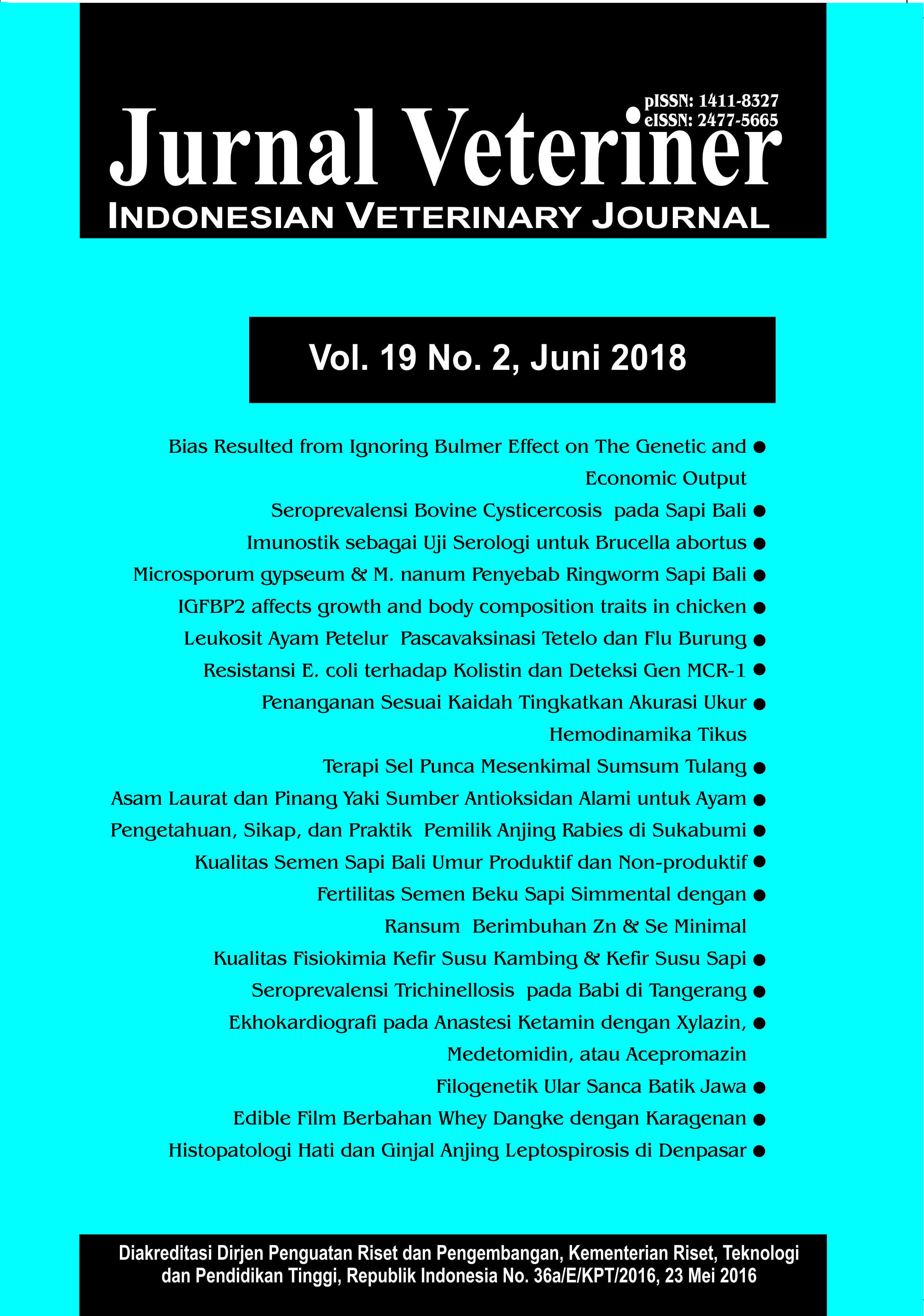Profil Hematologi Ayam Pedaging yang Diberi Ransum Mengandung Asam Laurat dan Pinang Yaki Sebagai Sumber Antioksidan Alami (HAEMATOLOGY PROFILE OF BROILER FED LAURIC ACID AND ARECA VESTIARIA GISEKE AS A SOURCE OF NATURAL ANTIOXIDANT)
Abstract
The objectives of the present study were to investigate the effect of dietary coconut oil as a source of lauric acid and Areca vestiaria Giseke (AV) as a natural antioxidant source on some haematological profile. Two hundred and forty (240) day-old unsexed Lohmann broiler chicks (MB-202 P) were divided into twenty four experimental units (ten chicks per unit) and arranged in a completely randomized design with a 2 x 4 factorial arrangement. Each experimental unit was repeated 3 times each with ten chicks. The first factor was the source of lauric acid in the ration consisted of 2 levels i.e., coconut oil and pure lauric acid. The second factor was dose of antioxidant consisted of 4 levels i.e., 0 (without antioxidant [AV and lauric acid] supplementation), AV at a dose of 625 mg kg-1 ration, AV at a dose of 1250 mg kg-1 ration, and tocopherol at a dose of 200 ppm). Blood sampling were collected from chicken at the end of experiment period (age 35 days). Total number of erythrocyte and leukocyte, Hb, PCV, together with absolute count of deferentiation of leukocyte were determined. General linear model and Tukey test were used for statistical analysis of the result. Blood sampling were collected from chicken at the end of experiment period (age 35 days). Total number of erythrocyte and leukocyte, Hb, PCV, together with absolute count of deferentiation of leukocyte were determined. General linear model and Tukey test were used for statistical analysis of the result. The study showed that source of lauric acid, antioxidant concentration and its interaction gave the same effect (P>0.05) to the erythrocytes, leucocytes, Hb, PCV, MCH, MCHC, and monocyte percentage of the broiler. The MCV in chickens consuming pure lauric acid was significantly higher than that of coconut oil. MCV values in chickens that received antioxidant AV at a dose of 625 mg kg-1 were significantly higher (P<0.05) than the others. The source of lauric acid was significant (P<0.01) affecting the percentage of lymphocytes and eosinophils, whereas the concentrations of antioxidants significantly affected the percentage of lymphocytes and heterophils, as well as the apparent effect (P<0.05) indicated by the eosinophil and basophil percentages.. The results of this study indicate that the use of lauric acid and concentration of antioxidant AV in the ration does not change the health status of broiler.



















